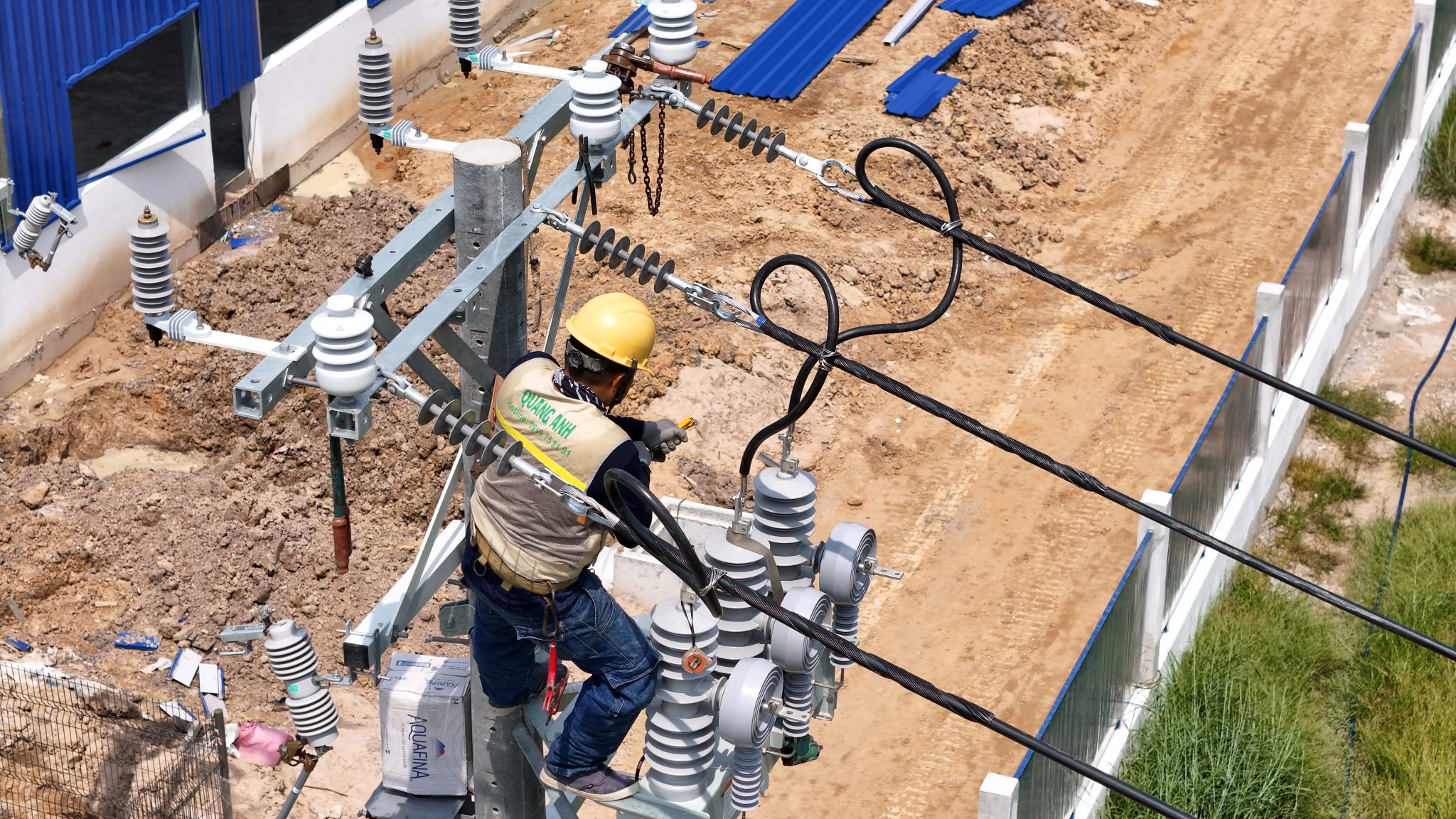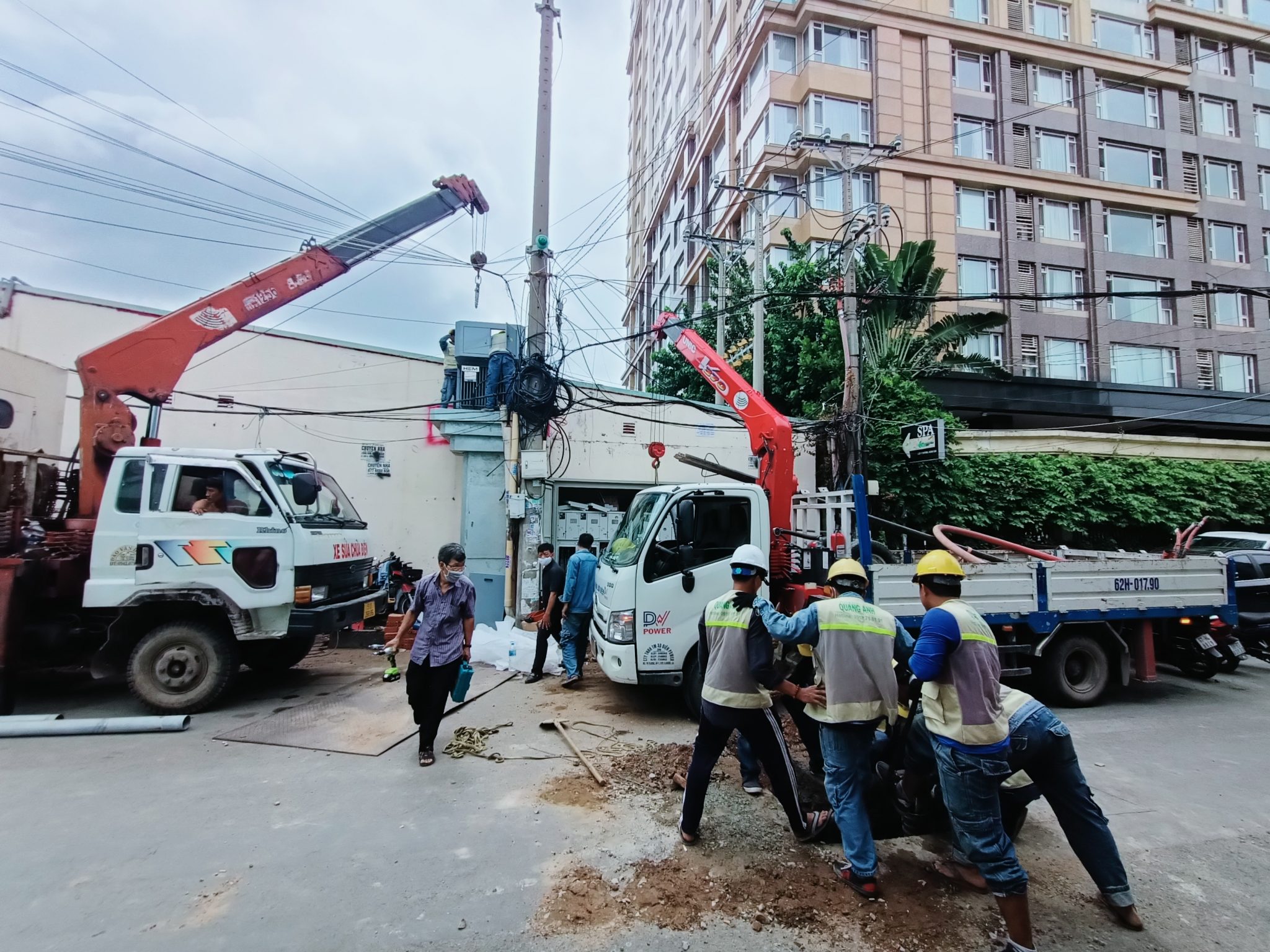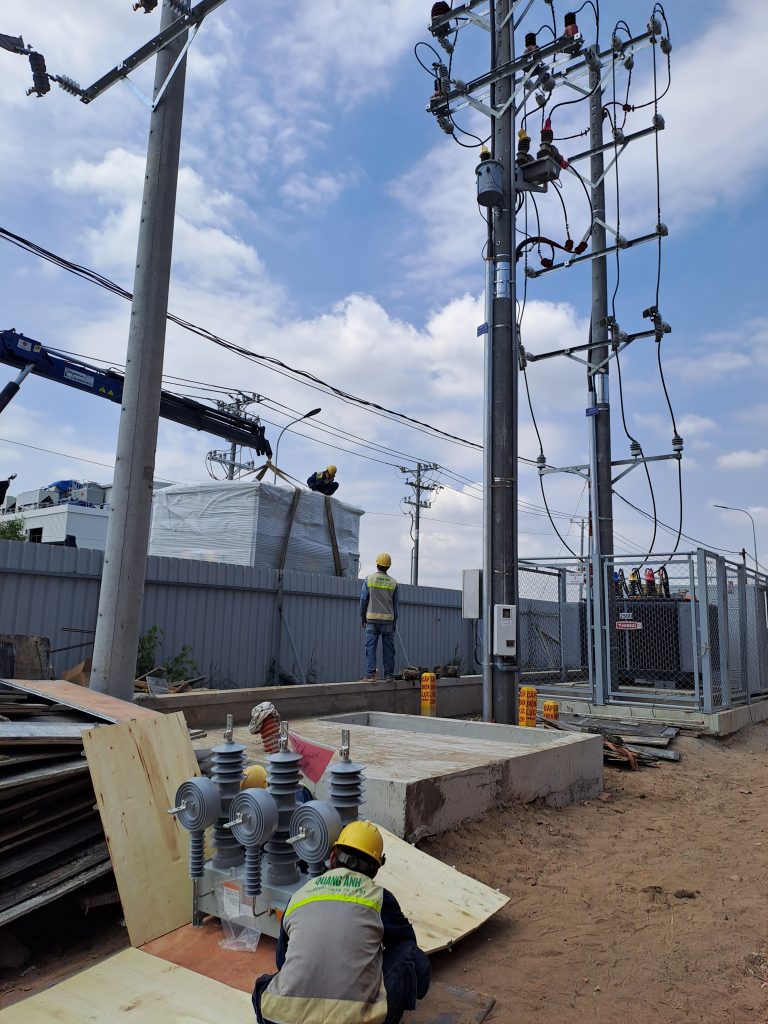News
Transformer Repair Services: Ensure Stable and Safe Operation
The transformer repair service includes inspection, cleaning, troubleshooting from minor faults to overhaul and recovery, aiming to ensure safe, stable, and efficient operation.
Repair and Maintenance Process for Transformers
Transformer repair services follow a strict process to ensure equipment operates efficiently. Initially, it ensures electrical safety, adhering to fire safety regulations to avoid accidents. Next is cleaning the transformer, including cleaning the casing and outer parts, repainting and welding any damaged areas. Then, inspecting and repairing damaged parts such as insulating gaskets, valves, and protective components are carried out. Following that is maintenance and replacement of internal components like sediment discharge, transformer oil replacement, and cooling system check. Finally, testing and function checks are conducted before re-energizing the transformer back into operation.
In Vietnam’s electrical engineering sector, transformer repair and maintenance processes play a crucial role in maintaining the system’s efficiency and safety. Initially, highlighting transformer safety issues is crucial. Strict electrical and labor safety measures must be enforced, along with fire safety compliance before beginning any repair activities.
In the transformer cleaning process, cleaning the exterior, washing the porcelain surfaces, repainting the outer layer, and possibly repairing the cooling fins are essential technical steps. Subsequently, engineers inspect and adjust to detect and correct any discrepancies or faults in critical components timely.
Part replacement includes refurbishing the devices and accessories within the transformer such as insulating gaskets, valves, and other protective parts. This process must be diligently executed to ensure stable operation.
After completing the above steps, testing and operation are mandatory. These tests ensure the transformer meets the safety requirements for safe reactivation.
Concerning maintenance, especially for oil-filled transformers, regular maintenance procedures are implemented to comprehensively monitor and analyze the equipment’s operation. Transformer maintenance includes thorough cleaning of the transformer station, testing and analyzing oil samples to check quality and refilling when necessary. Tightening cable lugs and joints is vital in maintaining operational safety and efficiency.
Regular inspections of cable insulation values and oil temperature are conducted to anticipate potential issues early. Advising and fortifying the transformer station’s terrain also significantly contributes to maintenance efforts, ensuring stable and sustainable system operations.
For dry-type transformers, this process focuses on checking the core, cable parts, along with cleaning the core and cooling fan, tightening the wires, and monitoring operational temperature. Regular repair and maintenance of transformers, usually annually, significantly mitigate explosion risks and ensure stable operation for the electrical system.

Levels of Transformer Repair
Transformer repair services are divided into three levels. Minor repair does not require oil removal, including cleaning transformers and checking minor faults. Regular maintenance requires disassembling the machine’s interior for more comprehensive inspections and repairs, often involving insulation drying. Overhaul is the most extensive level, including rewinding coils, repairing cores, and restoring insulation to extend equipment life.
Transformer repair is a crucial part of maintaining the stable operation of electrical systems. The repair levels are defined based on the intervention extent and workload.
- Minor transformer repair: This is light repair focused primarily on inspecting and cleaning the transformer’s exterior without needing oil or other part removal. Minor damage like loose connections or slight corrosion signs are repaired on site.
- Periodic overhaul: By removing the transformer core from its casing, a thorough inspection and repair can be carried out. This process includes drying insulation and replacing insulating oil when necessary to ensure long-term operational efficiency.
- Restorative overhaul: This is the most intensive repair level, involving the complete replacement or rewinding of coils, repairing and restoring the transformer core, as well as replacing severely damaged components.
The transformer repair process includes the following essential steps:
- Safety work: Ensuring electrical safety, labor safety, and necessary fire safety measures.
- External cleaning: Cleaning the transformer before conducting inspections and repairs.
- Inspection and adjustment: Conduct inspections of external parts, assess the state of insulating oil, protective devices, and connection components.
- Component replacement and improvement: Replace damaged components, refurbish coils, repair iron cores, and replace insulating oil as needed.
- Testing and re-energizing: Post-repair, conduct tests to ensure safety and efficiency before re-operating the transformer.
Additionally, maintenance includes items such as insulating oil replacement, repairing damaged solder joints, inspecting and replacing faulty sealing gaskets, and surveying the overall transformer status for any incidents or damage that need resolution.

Importance of Regular Transformer Maintenance
Regular transformer maintenance is performed every 3 to 6 months to promptly detect and repair faults, thereby extending life and reducing the risk of severe damage. This process involves inspecting cooling systems, replacing transformer oil, and identifying the condition of other parts for timely treatment. This is an important part of transformer repair services, ensuring machinery operates stably and safely.
Regular transformer maintenance plays a vital role in the operation of the electrical system, sustaining stability, durability, and safety for the grid. During periodic inspections, signs of issues such as phase imbalance, component damage, or transformer oil quality can also be detected early, preventing major incidents and protecting grid safety.
Periodic inspections not only ensure system safety but also protect operators and the community from fire and explosion risks. Transformers are an indispensable part of the power grid, and even minor malfunctions can disrupt daily operations, production activities, and cause significant economic losses.
Regular transformer maintenance also contributes to prolonging equipment life. This process includes cleaning, checking, and replacing worn parts, ensuring stable operation and minimizing severe damage risks. It also helps save costs significantly on replacing or repairing transformer incidents.
Typically, periodic electrical inspections are performed every 3–6 months, while comprehensive maintenance should be done annually or as per the manufacturer or utility’s regulations. Main maintenance activities include comprehensive transformer cleaning, checking transformer oil temperature and level, evaluating insulation condition, along with bolting and control unit operation assessment.
Overall, regular transformer maintenance is an essential task, not only helping the electrical system operate safely but also protecting investment capital for businesses.

Performing transformer repair services correctly not only helps the equipment operate stably but also enhances its lifespan, ensuring safety in operation. With a professional process from inspection, cleaning to maintenance and functional testing, transformers will continue to play an important role in your energy system.
Contact QuangAnhcons today for a free consultation and discover more about our professional transformer repair services via Hotline: +84 9 1975 8191.
QuangAnhcons offers professional transformer repair services, ensuring electrical safety, cleaning, inspection, and comprehensive transformer recovery. Our team is committed to extending equipment lifespan and ensuring stable and safe energy system operations.

 Tiếng Việt
Tiếng Việt 简体中文
简体中文 Deutsch
Deutsch 日本語
日本語 한국어
한국어 ไทย
ไทย Русский
Русский Français
Français
